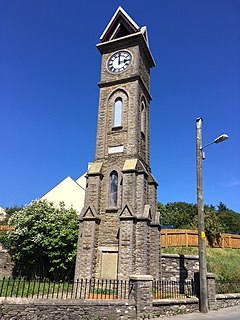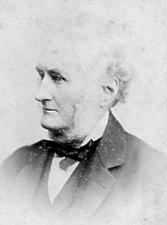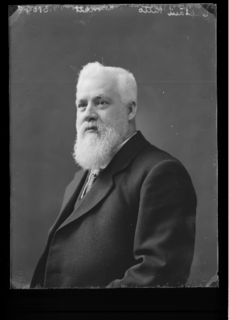Related Research Articles

Laxey is a village on the east coast of the Isle of Man. Its name derives from the Old Norse Laxa meaning 'Salmon River'. Its key distinguishing features are its three working vintage railways and the largest working waterwheel in the world. It is also the location of King Orry's Grave.

Ramsey is a coastal town in the north of the Isle of Man. It is the second largest town on the island after Douglas. Its population is 7,845 according to the 2016 Census. It has one of the biggest harbours on the island, and has a prominent derelict pier, called the Queen's Pier. It was formerly one of the main points of communication with Scotland. Ramsey has also been a route for several invasions by the Vikings and Scots.

Foxdale consisting of the districts of Upper and Lower Foxdale on the A3 Castletown to Ramsey Road with the junction of the A24 Foxdale to Braaid road and the A40 The Hope road in the parish of Kirk Patrick in the Isle of Man.

The Manx Northern Railway (MNR) was the second common carrier railway built in the Isle of Man. It operated as an independent concern only from 1879 to 1905.

Kate's Cottage, Isle of Man is a cottage and one of the named corners of the Snaefell Mountain Course used in Grand Prix-style motorcycle racing along public roadways of the Isle of Man. It has been asserted in the Isle of Man's program of Registered Buildings that the cottage was built by 1869.
The Bahama Bank is a sand bank across Ramsey Bay, about 3 miles off the east coast of the Isle of Man 4 miles northeast of Maughold Head.

The Bahama Bank Lightship was a Lightvessel stationed on the Bahama Bank east of Ramsey Bay, Isle of Man.

The Great Snaefell Mine, also referred to as the East Snaefell Mine, was a zinc mine located high in the Laxey Valley on the slopes of Snaefell Mountain, in the parish of Lonan, Isle of Man. The mine reached a depth of 1,188 ft (362 m) and is remembered as the scene of the Isle of Man's worst mining disaster in 1897.
The Great Snaefell Mining Company was a mining company formed to operate the Great Snaefell Mine on the Isle of Man.

The Great Laxey Mine was a silver, lead ore and zinc mine located in Laxey, in the parish of Lonan, Isle of Man. The mine reached a depth in excess of 2,200 ft (670 m) and consisted primarily of three shafts: the Welsh Shaft, the Dumbell's Shaft and the Engine Shaft; each of these shafts was connected by a series of levels.
The Isle of Man Mining Company, also referred to as the Foxdale Mining Company, was a mining company formed to operate the Foxdale Mines on the Isle of Man.

The Victoria Clock Tower, also referred to as the Queen Victoria Memorial, is a heritage-registered clock tower located in the former mining village of Foxdale, Isle of Man, and is said to have been the first memorial in the British Empire dedicated to the 64-year reign of Queen Victoria.

George William Dumbell QC was a British advocate, businessman and philanthropist who was invited to become a Member of the House of Keys serving two different terms. He is also remembered on the Isle of Man as being involved in two banking ventures of questionable reputation; the Joint Stock Bank and Dumbell's Bank.
The Ballajora Mine also referred to as the Maughold Head Mine, was an iron ore, hematite and copper mine located in the parish of Maughold, Isle of Man. The mine lay principally on the farmland of Magher-beck. The head engineer of the mine, referred to as the Mine Captain, was John Faragher.
The Maughold Head Mine was a copper mine located in the parish of Maughold, Isle of Man.
The Dhyrnane Mine was a hematite and iron ore mine located in the parish of Maughold, Isle of Man.

William Henry Kitto was Captain of the Foxdale Mines, vice-chairman of the Isle of Man Steam Packet Company, a director of the Isle of Man Railway and a Justice of the Peace who became a Member of the House of Keys for the constituency of Glenfaba in 1902.

The Foxdale Mines is a collective term for a series of mines and shafts which were situated in a highly mineralised zone on the Isle of Man, running east to west, from Elerslie mine in Crosby to Niarbyl on the coast near Dalby. In the 19th century the mines were widely regarded as amongst the richest ore mines in the British Isles.

John Kewley was Captain of the Great Snaefell Mine, Isle of Man. He is remembered for his heroism following the Snaefell Mine Disaster of 1897, during which he displayed extraordinary courage and endurance and for which he received the Medal of the Honourable Order of the Knights of St John of Jerusalem.

Arthur Binns Crookall JP, MLC, CP, was a noted philanthropist, Mayor of the Borough of Douglas, a member of both branches of Tynwald, Chairman of the Isle of Man Steam Packet Company and Chairman of the Isle of Man Railway Company who at his death was one of the wealthiest people on the Isle of Man.